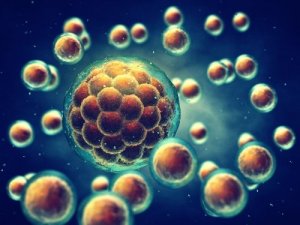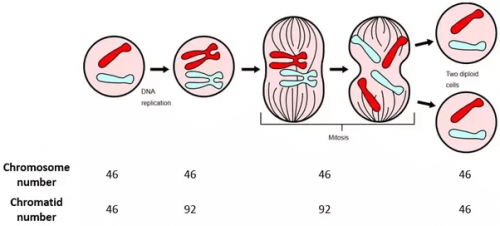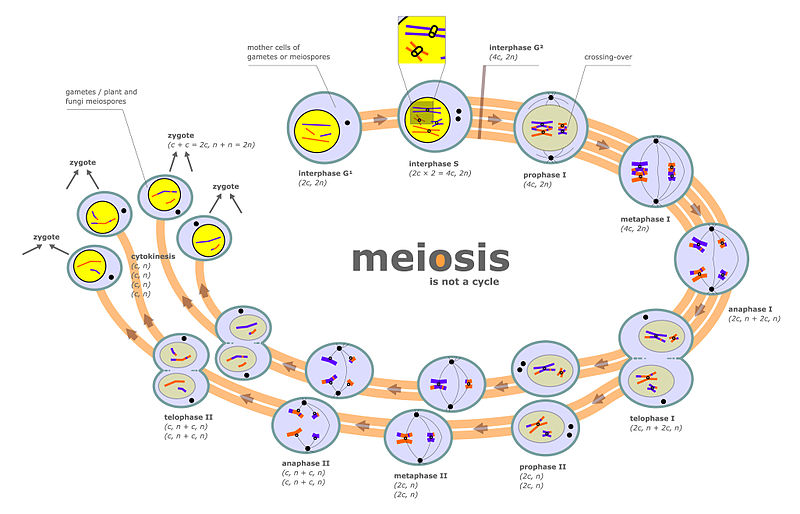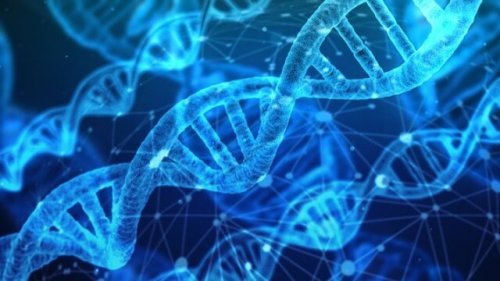The Meiosis Process Explained to Children


Written and verified by the biologist Olga Carbajo
The term meiosis comes from the Greek word for reduction. Along with mitosis, the meiosis process relates to cell production, but unlike mitosis, it creates four haploid cells, instead of a diploid cell.
What does this mean and what are the consequences of this reduction? In this article, you’ll find the answers to these questions and many more so you can explain it to children, but we’ll keep it fun and entertaining.

Why does the meiosis process happen?
To fully understand how meiosis works you need to understand why it does what it does: to get gametes, which are the reproductive cells of sexual reproductive organisms. The reproductive process needs one female gamete and one male gamete; both need to have half the chromosomes of any cell in these organisms.
Therefore, meiosis tells the story of a pair of siamese chromosomes that are present in a diploid cell. Each diploid cell has 46 chromosomes and two chromatids. In another process called gametogenesis, these cells break into haploid cells with chromatids of 23 chromosomes each.
The different phases of the meiosis process, explained to children
The meiosis process occurs in two stages: Meiosis I and Meiosis II. Before the first meiotic reduction happens, the genetic material needs to duplicate itself. This is how you’ll get your siamese chromosomes.
In humans, chromosomes look like an X. Split the X lengthwise and each half becomes a chromatid. The junction point is known as a centromere. During meiosis’ phases, chromatids will overlap to create a gamete.

Phases of Meiosis I or Mitosis explained to children
Prophase I
- It’s the longest and most complex period. This is where homolog chromosomes pair up.
- Our siamese exchange DNA fragments while at the centromere. These exchange areas are called chiasma.
- Chromosomes are done pairing and are separated.
- All of these changes happen throughout five stages: leptotene, zygotene, pachytene, diplotene, and diakinesis.
Prometaphase I and Metaphase I
The nuclear membrane disappears and some organelles more. In the meantime, our siamese get more condensed and keep traveling to the cell’s Equator, run by the microtubules of the mitotic spindle to form the metaphase plate.
Anaphase I
An organelle called centrosome, found on both poles of the cell, start to get microtubules from the spindle, breaking the siamese. Each one will get to one pole of the cell.
Telophase I
This phase is very rare. After it happens, the nuclear membrane would form again and you’ll get two haploid child cells, with 23 chromosomes each, but with two chromatids per chromosome.
Phases of Mitosis II explained to children
This stage is a normal mitosis process without DNA duplication because meiosis it’s all about getting gametes and not exchanging genetic material between two related chromosomes.
It has four parts: Prophase II, Metaphase II, Anaphase II, and here you’ll always get the Telophase. This is where the nuclear membrane forms. This process ends with cytokinesis when the cell is physically split.
As a result, you’ll get four haploid child cells, with 23 chromosomes, and each chromosome has just one chromatid. This means each chromosome looks like a half X. Why is this process so important?

Genetic importance of the meiosis process
As previously mentioned, the main goal of meiosis is to create gametes. However, during gametogenesis, chromosomes, both paternal and maternal, are randomly distributed among the daughter cells. This segregation is very important in the process of sexual reproduction because the mom would have 46 chromosomes, therefore giving the baby 92 chromosomes.
Meiosis keeps us genetically diverse. Just at the very same time that siamese are randomly exchanging DNA fragments, it makes sure that there aren’t two gametes alike. This genetic diversity is one of the most important aspects to ensure our evolution as a species.
“Any variation, however slight and from whatever cause proceeding, if it be in any degree profitable to an individual of any species, in its infinitely complex relations to other organic beings and to external nature, will tend to the preservation of that individual, and will generally be inherited by its offspring.”
– Charles Darwin –
The term meiosis comes from the Greek word for reduction. Along with mitosis, the meiosis process relates to cell production, but unlike mitosis, it creates four haploid cells, instead of a diploid cell.
What does this mean and what are the consequences of this reduction? In this article, you’ll find the answers to these questions and many more so you can explain it to children, but we’ll keep it fun and entertaining.

Why does the meiosis process happen?
To fully understand how meiosis works you need to understand why it does what it does: to get gametes, which are the reproductive cells of sexual reproductive organisms. The reproductive process needs one female gamete and one male gamete; both need to have half the chromosomes of any cell in these organisms.
Therefore, meiosis tells the story of a pair of siamese chromosomes that are present in a diploid cell. Each diploid cell has 46 chromosomes and two chromatids. In another process called gametogenesis, these cells break into haploid cells with chromatids of 23 chromosomes each.
The different phases of the meiosis process, explained to children
The meiosis process occurs in two stages: Meiosis I and Meiosis II. Before the first meiotic reduction happens, the genetic material needs to duplicate itself. This is how you’ll get your siamese chromosomes.
In humans, chromosomes look like an X. Split the X lengthwise and each half becomes a chromatid. The junction point is known as a centromere. During meiosis’ phases, chromatids will overlap to create a gamete.

Phases of Meiosis I or Mitosis explained to children
Prophase I
- It’s the longest and most complex period. This is where homolog chromosomes pair up.
- Our siamese exchange DNA fragments while at the centromere. These exchange areas are called chiasma.
- Chromosomes are done pairing and are separated.
- All of these changes happen throughout five stages: leptotene, zygotene, pachytene, diplotene, and diakinesis.
Prometaphase I and Metaphase I
The nuclear membrane disappears and some organelles more. In the meantime, our siamese get more condensed and keep traveling to the cell’s Equator, run by the microtubules of the mitotic spindle to form the metaphase plate.
Anaphase I
An organelle called centrosome, found on both poles of the cell, start to get microtubules from the spindle, breaking the siamese. Each one will get to one pole of the cell.
Telophase I
This phase is very rare. After it happens, the nuclear membrane would form again and you’ll get two haploid child cells, with 23 chromosomes each, but with two chromatids per chromosome.
Phases of Mitosis II explained to children
This stage is a normal mitosis process without DNA duplication because meiosis it’s all about getting gametes and not exchanging genetic material between two related chromosomes.
It has four parts: Prophase II, Metaphase II, Anaphase II, and here you’ll always get the Telophase. This is where the nuclear membrane forms. This process ends with cytokinesis when the cell is physically split.
As a result, you’ll get four haploid child cells, with 23 chromosomes, and each chromosome has just one chromatid. This means each chromosome looks like a half X. Why is this process so important?

Genetic importance of the meiosis process
As previously mentioned, the main goal of meiosis is to create gametes. However, during gametogenesis, chromosomes, both paternal and maternal, are randomly distributed among the daughter cells. This segregation is very important in the process of sexual reproduction because the mom would have 46 chromosomes, therefore giving the baby 92 chromosomes.
Meiosis keeps us genetically diverse. Just at the very same time that siamese are randomly exchanging DNA fragments, it makes sure that there aren’t two gametes alike. This genetic diversity is one of the most important aspects to ensure our evolution as a species.
“Any variation, however slight and from whatever cause proceeding, if it be in any degree profitable to an individual of any species, in its infinitely complex relations to other organic beings and to external nature, will tend to the preservation of that individual, and will generally be inherited by its offspring.”
– Charles Darwin –
All cited sources were thoroughly reviewed by our team to ensure their quality, reliability, currency, and validity. The bibliography of this article was considered reliable and of academic or scientific accuracy.
- Pérez Porto, J. (2019). Definición de meiosis. [artículo en web]. Recuperado de: www.definicion.de
- Alberts, Bruce. (2010). Biología molecular de la célula. Editorial: Omega
This text is provided for informational purposes only and does not replace consultation with a professional. If in doubt, consult your specialist.








